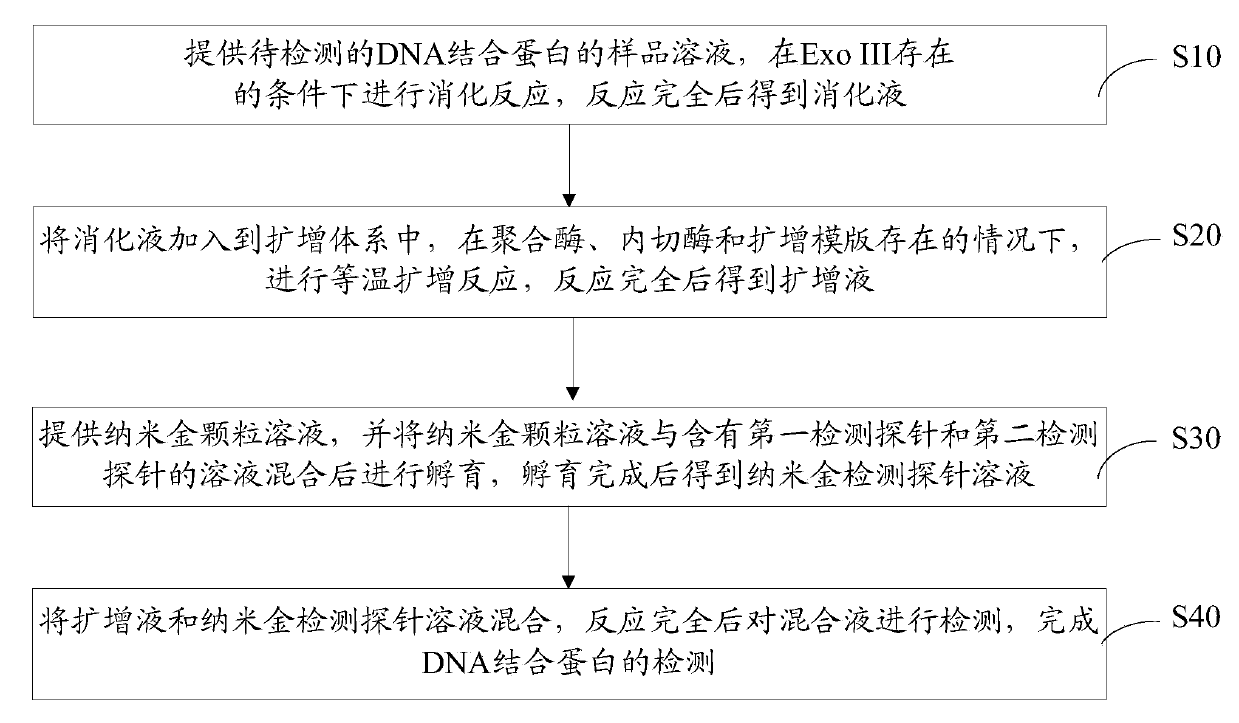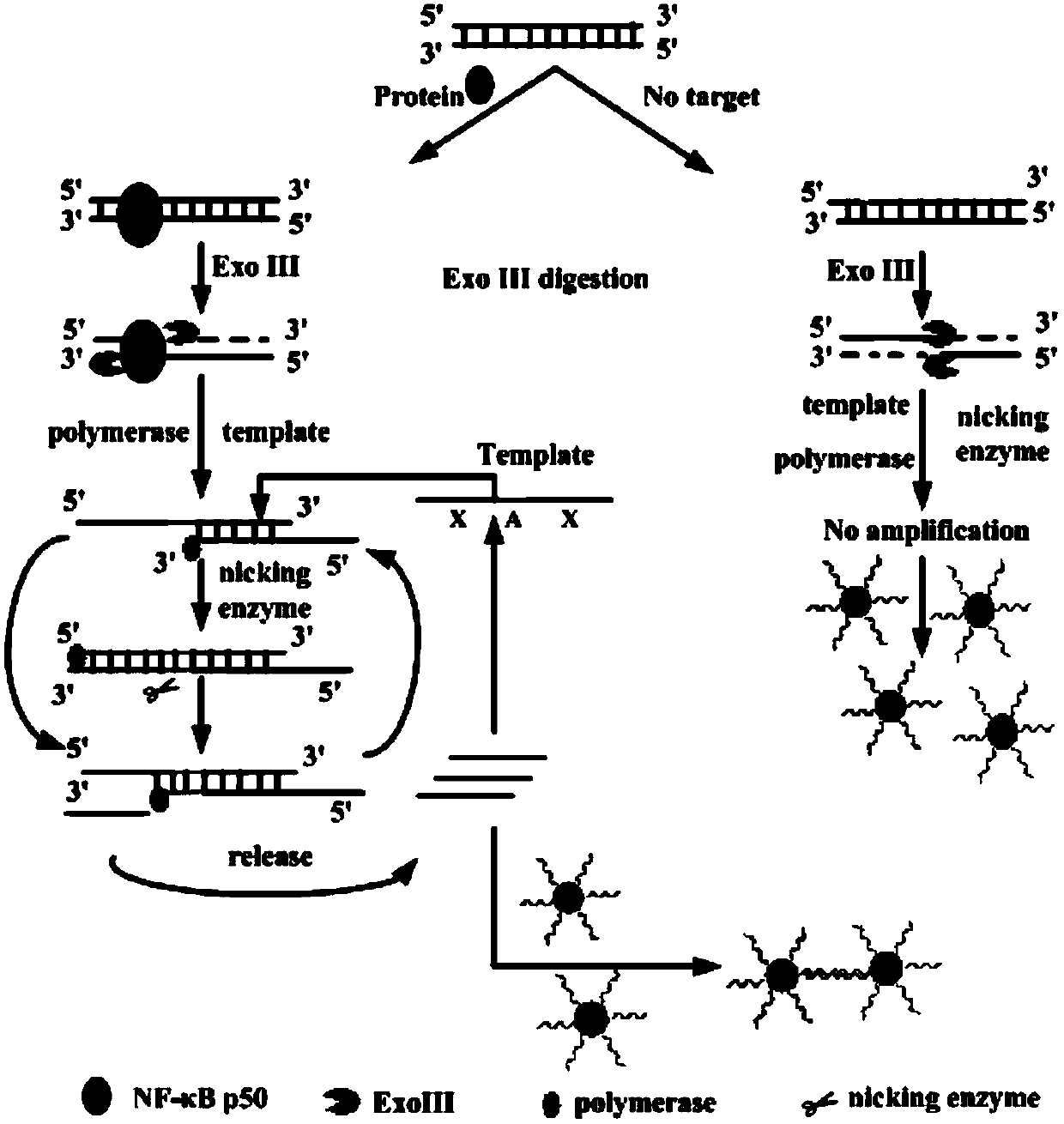Method for detecting DNA (deoxyribonucleic acid) binding protein
A technology of binding protein and detection method, which is applied in the field of detection of DNA binding protein, and can solve the problem of low sensitivity
- Summary
- Abstract
- Description
- Claims
- Application Information
AI Technical Summary
Problems solved by technology
Method used
Image
Examples
Embodiment 1
[0059] Preparation of the gold nanoparticle solution: the gold nanoparticle solution was prepared by reducing chloroauric acid with sodium citrate. 3.7mL of HAuCl with a mass concentration of 1% 4 Add the aqueous solution to 90mL water and heat to boiling, then quickly add 9mL sodium citrate aqueous solution with a mass concentration of 1%, and continue boiling for 15 minutes.
[0060] Preparation of nano-gold detection probes: two different sulfhydryl-modified oligonucleotides were used to modify gold nanoparticles. 5.2 nanomoles of probe 1 (sequence shown in SEQ ID No.3) and 5.2 nanomoles of probe 2 (sequence shown in SEQ ID No.4) were added together in 2.5 ml of nano-gold solution After standing at room temperature for 16 hours, add 0.1 mole per liter of phosphate buffer (pH7.0) dropwise to adjust to a final concentration of 10 mmol per liter, and simultaneously add NaCl to adjust to a concentration of 0.1 mole per liter, Stand at room temperature for 40 hours. Then at 4...
Embodiment 2
[0068] 1. Characteristics of gold nanoparticles and DNA-modified gold nanoparticles
[0069] In order to obtain uniformly sized gold nanoparticles, the particle size of the synthesized gold nanoparticles observed by a scanning transmission electron microscope is about 14 nanometers, almost all round, with good dispersion, and the results are as follows image 3 shown.
[0070] 2. Feasibility experiment of colorimetric detection of NF-κB p50 based on amplification of gold nanoparticles
[0071] To determine whether amplification-based gold nanocolorimetry can detect DNA-binding proteins, we chose the NF-κB p50 transcription factor as a model for detection. NF-κB p50 binds to DNA, and after DNA exonuclease III cleavage and isothermal amplification at 40°C, it is first verified by 14% non-denaturing polyacrylamide gel electrophoresis whether there is a 24nt oligonucleotide sequence. The result is as Figure 4 It shows that 24nt oligonucleotide sequence can be produced when NF-κB...
PUM
| Property | Measurement | Unit |
|---|---|---|
| particle diameter | aaaaa | aaaaa |
Abstract
Description
Claims
Application Information
 Login to View More
Login to View More - R&D
- Intellectual Property
- Life Sciences
- Materials
- Tech Scout
- Unparalleled Data Quality
- Higher Quality Content
- 60% Fewer Hallucinations
Browse by: Latest US Patents, China's latest patents, Technical Efficacy Thesaurus, Application Domain, Technology Topic, Popular Technical Reports.
© 2025 PatSnap. All rights reserved.Legal|Privacy policy|Modern Slavery Act Transparency Statement|Sitemap|About US| Contact US: help@patsnap.com



